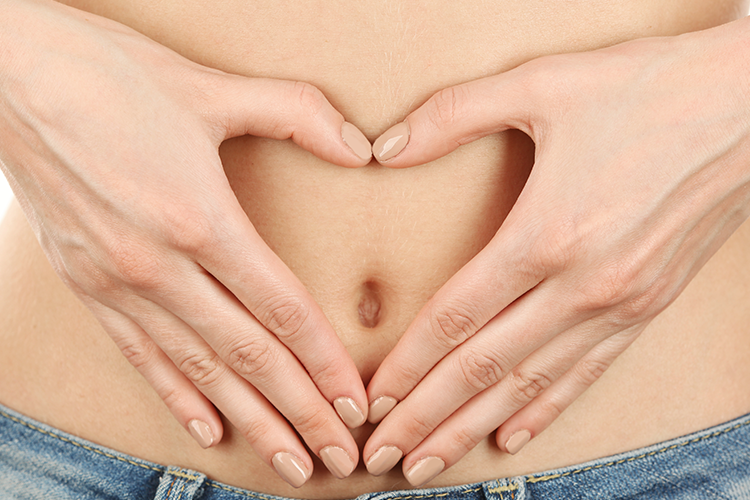Blog
Get your belly happy!
 Overeating, bloating, heartburn, unable to ‘fully evacuate’ when on the loo…most of us have been there – digestive issues are far more common than you may think!
Overeating, bloating, heartburn, unable to ‘fully evacuate’ when on the loo…most of us have been there – digestive issues are far more common than you may think!
According to The Gut Foundation, at least half of us will experience some kind of gastrointestinal discomfort throughout a year – whether for a couple of days, or a more persistent ache in the gut-side. And if not us, we certainly know someone who has!
This can be a result of any number of things, such as over-indulging in the sugary-sweet-stuff, being more stressed than usual, or a longer standing condition like irritable bowel syndrome or reflux.
Our gut is central to our wellbeing. It is where we absorb nutrients, excrete waste, and house microbiota that can influence many other aspects of health. So we want to look after it!
Here are a few things to consider for helping ease the bloat/burn/blockage!
Love fibre
Perhaps one of the most important nutrients in the human diet, yet many of us lack adequate fibre intake.The recommended daily amount is 25-30grams, but if you aren’t getting this just yet, take your time to increase intake and ensure you are drinking plenty of water. You want a mixture of soluble (think veg, fruit, psyllium) and insoluble fibre (think oats, flaxseed, beans) throughout a day to encourage intestinal health and regular passing of stools.
Initially increasing the amount of dietary fibre may cause changes in bowel movements, gas, and bloating. This is your body – and your intestinal microbiome – adjusting. But give it a few weeks, and you may soon find those lentils don’t cause quite the reaction they once did!
Fibre is also filling, helps with the detoxification of chemicals that have been processed by the liver, and feed the good bacteria of our microbiome (which, as mentioned, play a big role in overall health).
Warm water or apple cider vinegar in the morning
A natural therapy long regarded for its assistance with getting the digestive juices flowing, ready to tackle the food you throw down your gob.
Chew. Your. Food.
This also applies to smoothies, soups and any other pre-macerated foods!
In the mouth, the saliva contains enzymes that begin the physical process of breaking down food. But you have to give the enzyme a chance to do their thing – so eat slowly, mindfully, and chew. And chew. And 20 more times, chew. This means less work for the digestive tract further down, so you are less likely to bloat.
Digestion actually begins BEFORE anything hits your mouth. The sight, smell, and thought of what you are about to devour triggers signals in your brain that tell the body to start pumping out some digestive enzymes – an army ready to break down what you throw at them.
Get moving
Do you find you are more bloated mid-afternoon than say, after breakfast? This may be because you have been sitting for most of the day, cramping your intestine’s style.
Physical activity like walking stimulates blood flow around the body, including to the digestive tract. It encourages food to move through the intestinal tract and waste be excreted with ease, where it would otherwise get stagnant, ferment, and cause flatulence.
Happy mind, happy belly
What goes on in our brain is deeply connected to our gut. And vice versa. Finding ways to manage stress can be incredibly helpful, as feelings of stress can manifest in symptoms such as bloating, cramps, and aches, and conditions like irritable bowel syndrome and gastroesophageal reflux disease.
If symptoms persist…
If you have concerns or are experiencing persistent pain or discomfort anywhere along your digestive tract – including your oesophagus, your stomach, your colon, or finding blood in your poo – please do consult with your healthcare practitioner.
They will be able to assess your individual situation and advise on dietary and lifestyle protocol to suit you and advise if further medical treatment is required.
By Angela Johnson (BHSc Nut. Med.)











